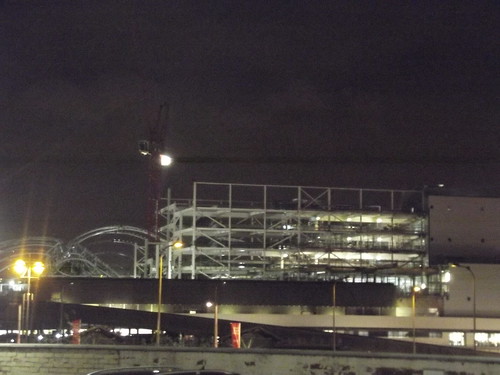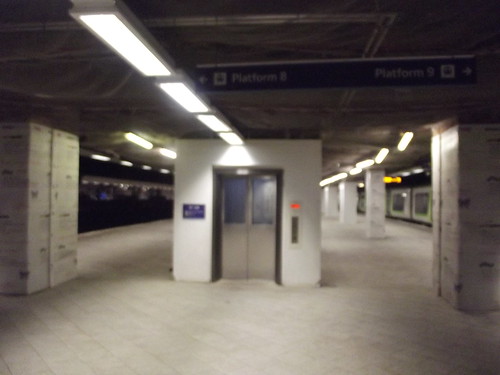A couple of points, if I may.
Yes, a massive mistake in the planning in the late 50's and implementation in the early 60's, especially when you look at Manchester; Liverpool; Leeds and more recently St. Pancras where they retained their original train sheds and refurbished them, wonderful in hindsight and what happened at New St. mirrored what the planners did across the rest of our City, slowly, carefully but surely being corrected.
The reference to Grand Central; This is the new name being given to the concourse above the station, the station remains as Birmingham New Street was what we were told on our 'behind the scenes' visit.
On a visit to the station just before the hand-over of phase one we were shown where they had broken through the slab and shown the extent of what will become the new Atrium and got an idea of just how much space is being created to open up the concourse and with a glass roof will look stunning. Phase one is nowhere near half of the new station, may just about be a third and is thus extremely restricted at the moment given the passenger numbers. Thre are no platforms completed yet, but the plan is to remove any waiting rooms on them to open them up as much as possible and keep everyone in relative comfort, and able to shop, in the new concourse above.
The entrances will also be improved on completion in 2015 and will also have the Metro to wizz everyone to Snow Hill where the proper station used to be....................but watch this space, I've heard of other plans!!!!
Yes, a massive mistake in the planning in the late 50's and implementation in the early 60's, especially when you look at Manchester; Liverpool; Leeds and more recently St. Pancras where they retained their original train sheds and refurbished them, wonderful in hindsight and what happened at New St. mirrored what the planners did across the rest of our City, slowly, carefully but surely being corrected.
The reference to Grand Central; This is the new name being given to the concourse above the station, the station remains as Birmingham New Street was what we were told on our 'behind the scenes' visit.
On a visit to the station just before the hand-over of phase one we were shown where they had broken through the slab and shown the extent of what will become the new Atrium and got an idea of just how much space is being created to open up the concourse and with a glass roof will look stunning. Phase one is nowhere near half of the new station, may just about be a third and is thus extremely restricted at the moment given the passenger numbers. Thre are no platforms completed yet, but the plan is to remove any waiting rooms on them to open them up as much as possible and keep everyone in relative comfort, and able to shop, in the new concourse above.
The entrances will also be improved on completion in 2015 and will also have the Metro to wizz everyone to Snow Hill where the proper station used to be....................but watch this space, I've heard of other plans!!!!


























